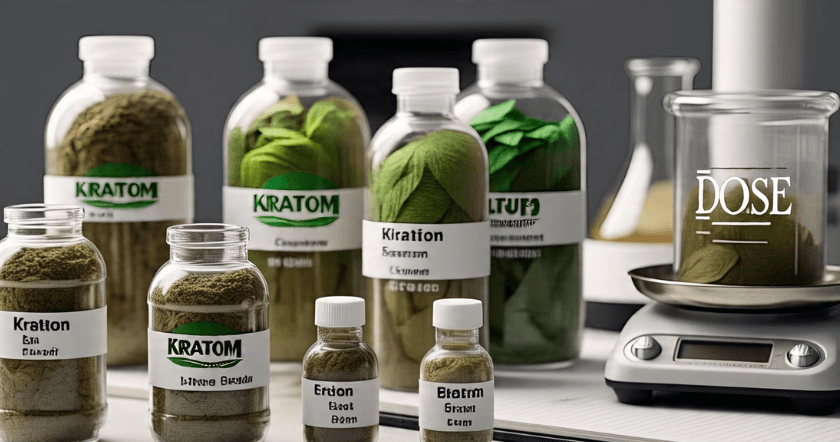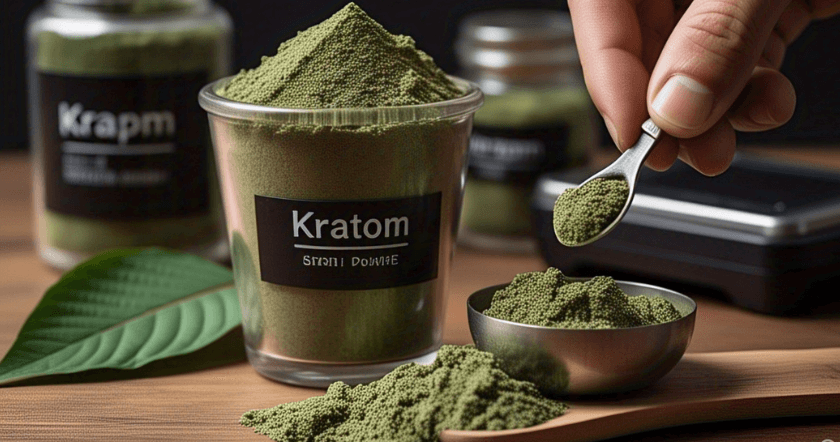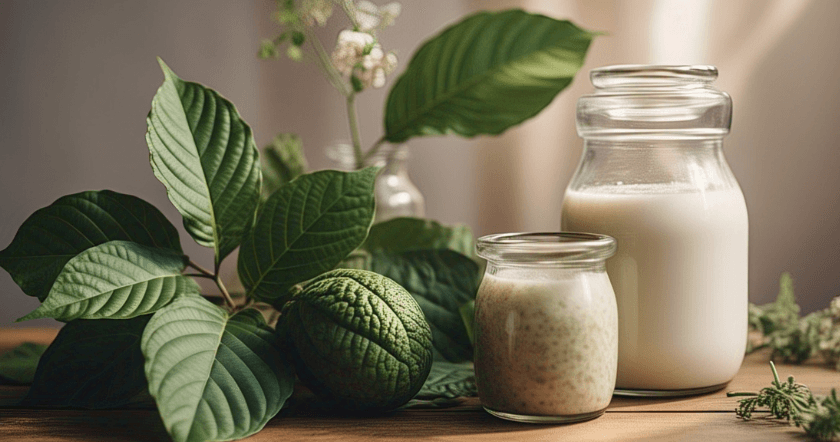Understanding Kratom Dosage By Strain For Best Results
The Southeast Asian tropical tree known as Kratom has drawn a lot of interest in the United States due to its unusual capacity to offer discomfort relief, relaxation, or vigor, depending on the strain and dosage. However, dosage is one of the most important considerations when it comes to utilizing Kratom properly. Furthermore, there is no one-size-fits-all dose; rather, it might vary significantly based on the strain, your body chemistry, and the benefits you hope to achieve.
We’ll explore how dosage affects Kratom’s effects in this blog article, how it differs depending on the strain, and what you need to know to choose the ideal dosage for the best benefits. This analysis will assist you in making more individualized and knowledgeable decisions, regardless of your level of experience with Kratom.
The Significance Of Kratom Dosage
The alkaloids in Kratom, namely mitragynine and 7-hydroxymitragynine, attach to brain receptors and affect mood, energy levels, and restlessness perception. The worst part is that the effects vary depending on the dosage.
Low Dosage: In general, low dosages (1–3 grams) are energizing and invigorating.
Moderate Dosage: The effects of moderate dosages (3–6 grams) are frequently well-balanced, including mild stimulation, mood enhancement, and relaxation.
High Doasage: Although high dosages (6–8+ grams) are sedative and can promote relaxation and alleviate uneasiness, they may also have additional negative effects.
The dose must be modified according to the particular variety of Kratom being used because each strain has a varied ratio of these alkaloids.
The Three Primary Colors Of Kratom Strains
Before discussing dosage-by-strain, it’s critical to comprehend the color-coded vein system that serves as the basis for Kratom classification:
1. Kratom From Red Veins
Renowned For: Relaxation, discomfort alleviation, and sedation
Ideal For: Sleeping or relaxing in the evening
Alkaloid Profile: 7-hydroxymitragynine is more prevalent
2. Kratom From Green Vein
Well-Known For: Enhanced mood, balanced energy, and minor alleviation
Best Utilized: All day long
Alkaloid Composition: 7-hydroxymitragynine and balanced mitragynine
3. Kratom From White Vein
Renowned For: Motivation, attention, and stimulation
Ideal For: Pre-work or in the morning
Alkaloid Composition: Mitragynine is more prevalent in the alkaloid profile.
This leads us to the main point of this article: each of them reacts differently to varied dosages.
Dosage Guide For Red Vein Kratom Common Strains
- Red Bali Kratom
- Maeng Da Re Kratom
- Red Borneo Kratom
- Red Thai Kratom
General Suggestions For Dosage
Range of Doses for the Purpose
- Gentle relaxation: Two to four grams
- Restlessness alleviation: 4–6 grams
- Discomfort and sleep alleviation: 6–8 grams
Notes:
- Particularly at greater dosages, red strains are less exciting than other types.
- Lower dosages can still be helpful for sedation-sensitive individuals without causing excessive fatigue.
- Red Maeng Da is stronger than Red Bali; users may require somewhat less dosage to achieve comparable results.
Advice: Before increasing the dosage, beginners should start with 2 grams to gauge how sedative the red strain is for them.
Dosage Guide For Green Vein Kratom Common strains:
- Green Maeng Da
- Malay green Kratom
- Borneo’s green
- Thai green
General Suggestions For Dosage:
Range of Doses for the Purpose
- Boost of attitude and energy: 1.5–3 grams
- Concentration and output: 3–5 grams
- Restlessness and calm support: 5–7 grams
Notes:
- Because of their balance, green strains are perfect for use during the day.
- Compared to other green strains, Green Maeng Da is especially strong and may require fewer dosages.
- The benefits of Green Malay are long-lasting, yet have a gradual start.
Advice: For jitter-free energy, limit your intake to 2-4 grams when using green strains in place of coffee.
Dosage Guide For White Vein Kratom Common Strains:
- White Maeng Da
- Borneo White
- White Thai
- Sumatra White
General Suggestions For Dosage:
Range of Doses for the Purpose
- 1–3 grams of energy in the morning
- Motivation and focus 3–5 grams
- Feelings and slight euphoria 4–6 grams
Notes:
- Because white strains are the most invigorating, some users may become jittery when taking larger amounts.
- Excellent for sociable and productive settings.
- One of the strongest whites is White Maeng Da; start low.
Advice: White strains might disrupt sleep, so avoid taking them too late in the day.
Factors Influencing The Dosage Of Kratom
Individual dose requirements might differ greatly even with broad recommendations because of:
1. Weight And Metabolism
For the same results, somewhat greater dosages are frequently required for heavier people or those with quicker metabolisms.
2. Tolerance
Frequent usage of Kratom might cause tolerance, which means that more is required to achieve the same result. To stay clear of this:
- Rotate strains often.
- Take frequent pauses for tolerance.
3. Type Of Kratom
- The most popular and adaptable type of Kratom powder is this one.
- Because of their delayed onset, capsules frequently require somewhat more total grams.
- Because extracts are so concentrated, relatively smaller dosages are needed.
4. A Full Or Empty Stomach
On an empty stomach, Kratom has more potency. You might require a slightly larger dosage if taken after eating.
How To Take Precise Measurements Of Kratom
Since the actual weight of “a teaspoon” of Kratom might vary, a digital scale is the best option for accuracy.
- 1 Level Teaspoon: Depending on the grind, one level teaspoon is equivalent to around 2.5 grams.
- 1 Level Tablespoon: One level tablespoon is equal to around 6–7 grams.
Expert Advice: Start with 2 grams and, if necessary, increase by 0.5–1 grams every 30–60 minutes.
How To Find Your “Sweet Spot”
It takes both art and science to determine the ideal Kratom dosage. Here’s a clever strategy:
- Start With a Little Amount: When starting new strains, start with 2 grams.
- Wait: Allow it to fully activate for 45 to 60 minutes.
- Increase Gradually: Try 0.5–1 grams more the following time if you don’t feel much.
- Keep A Journal of Your Experience: Keep track of the effects, time, dosage, and strain.
You may confidently dial in your perfect dosage with this method, one that provides advantages without unintended side effects.
Typical Dosage Errors To Avoid
Taking Too Much Too Soon: Taking more Kratom doesn’t necessarily result in greater effects; it can also make you feel nauseous or lightheaded.
Ignoring Strain Potency: Maeng Da is one of the strongest strains.
Use Same Dose Of Same Strain: White, green, and red Kratom strains all react differently when given the same dosage.
Lack Of Hydration: Drink plenty of water because Kratom can cause dehydration.
Conclusion
The beauty of Bedrock Botanicals Kratom is its adaptability, yet its usage also necessitates caution and consideration. You can increase your energy, reduce your discomfort, or find calm with the appropriate strain at the right moment. But making a mistake might cause discomfort or even irritation.
Start slowly, pay attention to your body, and start low. Make every dose a deliberate component of your health regimen, keep track of your experience, and switch up your strains.
When used carefully and with the appropriate understanding, Kratom may be a very useful botanical ally.










